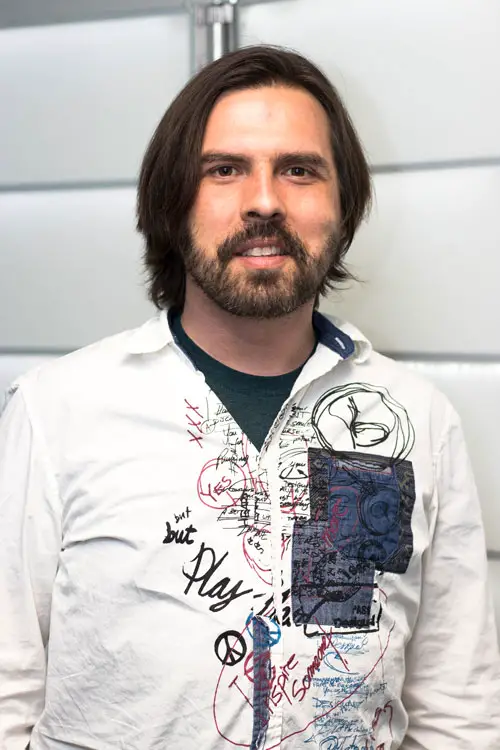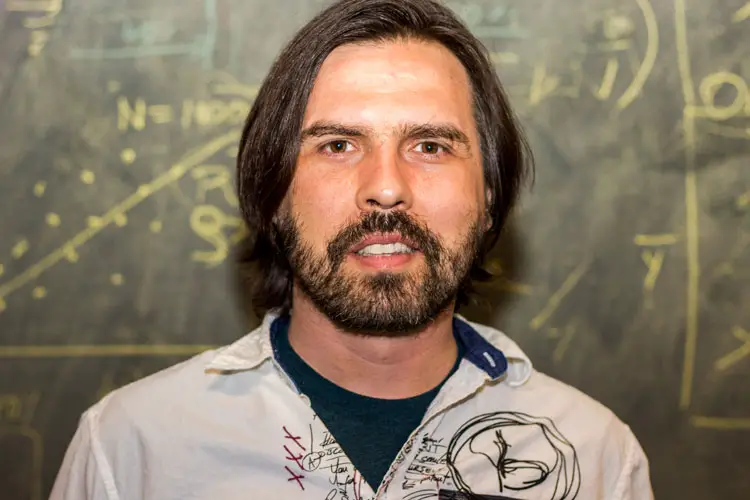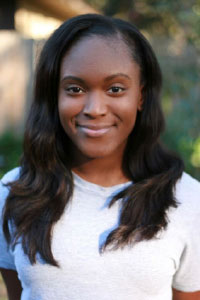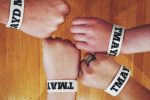Professor César Hidalgo, who teaches the Collective Learning group at the MIT Media Lab, has developed an eight-episode reality TV series that challenges perceptions of reality television.
The project, entitled “In My Shoes,” follows Hidalgo as he goes about working, researching, traveling and collaborating with others, in order to give viewers a deeper look into the life of a scholar, both in and out of the classroom. Hidalgo designed the project with hopes of shedding light on the daily lives of academics, as well as contesting the idea that reality television is inherently insubstantial.

Valarie Kiel: What is your job at MIT?
César Hidalgo: I run the Collective Learning group at the MIT Media Lab. In our group, we study how teams, organizations, cities and countries learn. We also develop data visualization resources, such as the Observatory of Economic Complexity, Pantheon, Immersion and DataUSA, which facilitate the ability of groups to learn by visualizing and analyzing data.
VK: What led to you creating a reality TV series about your life?
CD: It all began with a missed flight. In 2014 I was scheduled to give a talk at the Santa Fe Institute in New Mexico. My plan was to fly to Albuquerque on Thursday night, drive to Santa Fe, give my talk and return to Boston the next day. However, the connecting flight from Boston to New York was delayed, so I could not make it to Albuquerque.
On my way back from the airport, I notified the people in Santa Fe that I was missing the event, and told them that I was going to send a video instead. That night, I sent a text message to Manuel Aristarán, a graduate student who had recently joined my group. Manuel had mentioned that his wife was a filmmaker, so I asked him if I could hire her to help me make a video the next day. The next morning we filmed, edited and submitted a video. A few months later, I offered her a desk and a paycheck in my lab.
VK: What’s the show called, and what’s it about?
CD: The show is called “In My Shoes,” and it shows the life of a scholar taking on the world. It helps illustrate what the life of a scholar is like outside the classroom, meaning on the road and at home. The series also helps show a realization that is natural to those who have travelled the world. “In My Shoes” reveals that the things that are common to people from different parts of the world are larger than those that set them apart.
VK: How might the show influence college students?
CD: It is hard for many college students to imagine what the life of a professor is like, in part because it is a global life that takes place mostly outside the classroom. “In My Shoes” helps show students what the life of a professor can be like. It shows how a scholar connects with other scholars, as well as with the private sector and policy-making actions.
VK: You mention that the series is about balancing work, travel and family. Why is pointing that out relevant for students?
CD: College, and specially grad school, is a major transitional time in a person’s life; it is a transition between childhood and adulthood. I meet many bright students every year at MIT, but what is hard for them to learn is what it means to have an adult life.
The challenges that people need to learn involve soft skills: how to communicate effectively, how to relate to others, how to identify a good idea, how to balance and prioritize work, etc. Most students think they know to do this, but I find most of them don’t. I don’t think I am a role model for these skills, but I think the series helps show a potential path that may lie ahead.
VK: Any challenges you faced while developing the series?
CD: Doing eight episodes of video is not an easy task. It requires developing the skills needed to create visual narratives, which is different from the skills needed to write text, which is what scholars often do. Learning how to construct visual narratives, and how to create effective transitions between sequences, was one of the biggest challenges I faced when making “In My Shoes.”
VK: You travel a lot. How does that impact your job when it comes to interacting with people or teaching to your students back at MIT?
CD: Travel is good because you learn a lot from it, but it is also very demanding. When you travel from North America and back in a week, you have usually done thirty hours of travel, including flights, security lines at airports and more, which, as a result, eats up most of your workweek. Prioritization becomes very important, so when I am at MIT I try to prioritize time to work with my students.
VK: Are there any big projects you worked on during the series?
CD: During the series I show the release of DataUSA, which is the most comprehensive effort to visualize and deliver U.S. public data.
VK: Any more episodes to be added to the show?
CD: Season 1 is only eight episodes long, and I don’t expect to add any new episodes. Although I am planning to do a second season in VR, it may be only one episode, but I think VR will provide a more immersive experience.











